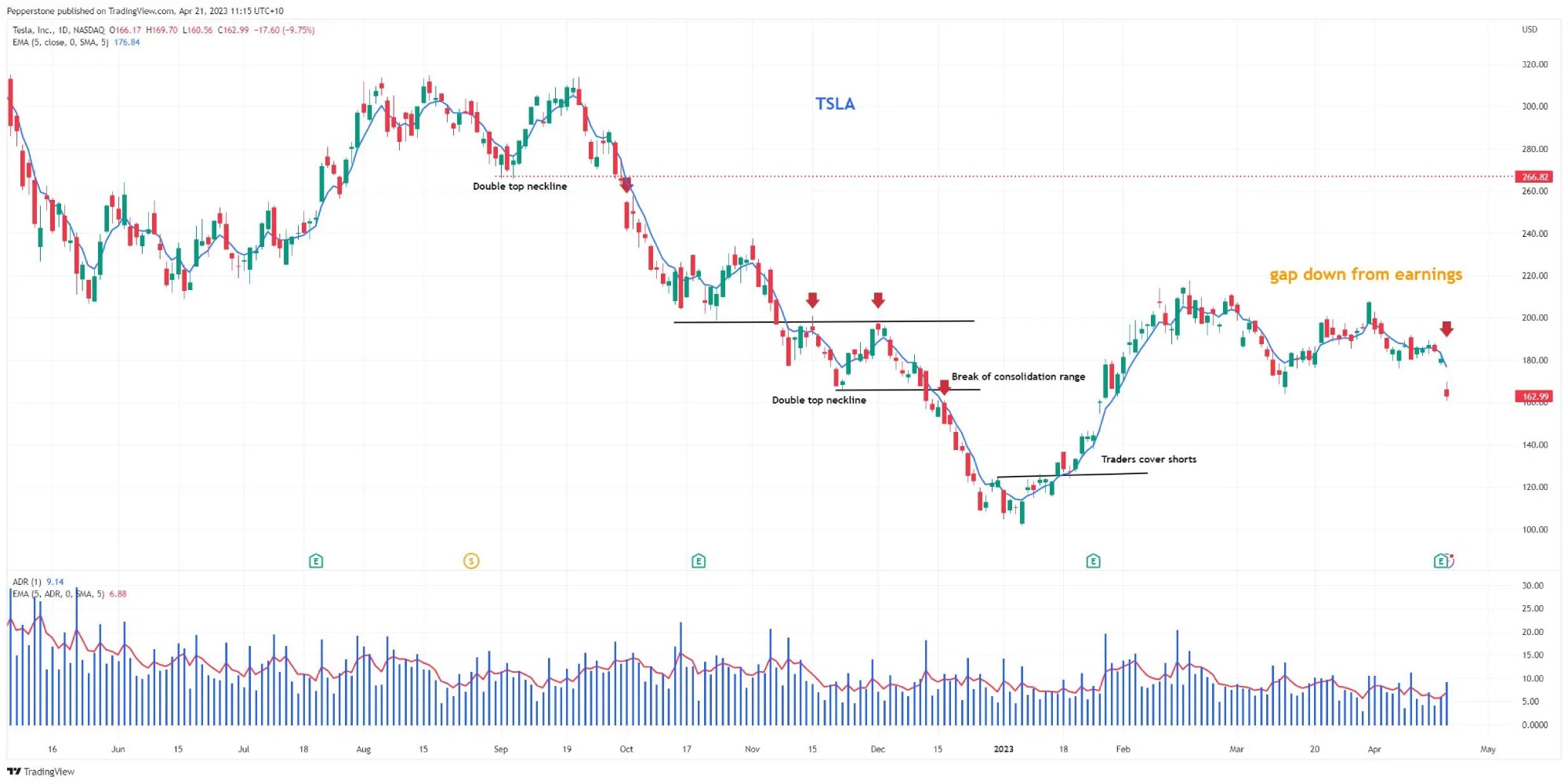Margin trading products are complex instruments and come with a high risk of losing money rapidly due to leverage. 88% of retail investor accounts lose money when trading on margin with this provider. You should consider whether you understand how margin trading works and whether you can afford to take the high risk of losing your money.
- English
The investment case is absolutely fascinating, and the execution of the new strategy suggests Tesla will be the kingpin of volatility at least for the next few weeks. There is also a strong macro focus, as the rationale to cut prices plays into our understanding of a reduced purchasing power of consumers and the impact of a rising cost of credit.
Tesla – daily chart

Are we seeing signs of a price war?
There is increased talk of a 'price war' - a factor Elon Musk has pushed back on. Interestingly, a handful of equity strategists have made contrasts to Ford’s move to assembly lines in 1913, which ultimately saw car prices tumble – in turn, Ford’s ability to produce cars far cheaper than its competitors resulted in other car manufacturers going out of business.
Tesla's recent moves to cut prices ultimately saw gross margin coming in a 19%, well below the street’s consensus expectations and a sharp drop from the 24.3% recorded in Q4. Musk has indicated they could even look to lower prices further from here – potentially even to cost price.
Tesla needs to hit demand targets
The trade-off with cutting prices is that Tesla absolutely needs to hit the streets demand forecasts – if there are increased expectations that they will fail to meet the consensus view of 1.82m vehicle sales for 2023 (2.34m for 2024), then the market will be on notice for further price cuts. A major negative for the share price, and would clearly entice the short sellers and see analysts cut price targets for the stock.
Recall, consumers are facing a tougher credit environment as banks’ lending standards increase and the rising cost to borrow results in would-be purchases shying away – but like any business, Tesla needs to find that perfect price point within the supply/demand equilibrium. Given its position, Tesla does have the ability to undercut other EV players and that suggests an obvious risk of consolidation in the EV space over a longer-term timeframe.
Again, this is a margin story and one where the market will look at any anecdotal evidence that the price cuts are not resonating – it's here where the share price of Tesla will be very sensitive to any growth and labour market data points going forward.
Tesla cements its place as a trader's favourite
It’s a high-risk strategy Musk et al are moving towards, as is the way with strategies that are aimed at stoking demand and increasing market share over a longer-term timeframe. From a share price perspective, it could mean short-term pain for a longer-term gain. It certainly cements Tesla as one of the kingpins of equity volatility, which will no doubt resonate with traders who cut their craft trading long and short.
Related articles
The material provided here has not been prepared in accordance with legal requirements designed to promote the independence of investment research and as such is considered to be a marketing communication. Whilst it is not subject to any prohibition on dealing ahead of the dissemination of investment research we will not seek to take any advantage before providing it to our clients. Pepperstone doesn’t represent that the material provided here is accurate, current or complete, and therefore shouldn’t be relied upon as such. The information, whether from a third party or not, isn’t to be considered as a recommendation; or an offer to buy or sell; or the solicitation of an offer to buy or sell any security, financial product or instrument; or to participate in any particular trading strategy. It does not take into account readers’ financial situation or investment objectives. We advise any readers of this content to seek their own advice. Without the approval of Pepperstone, reproduction or redistribution of this information isn’t permitted.


